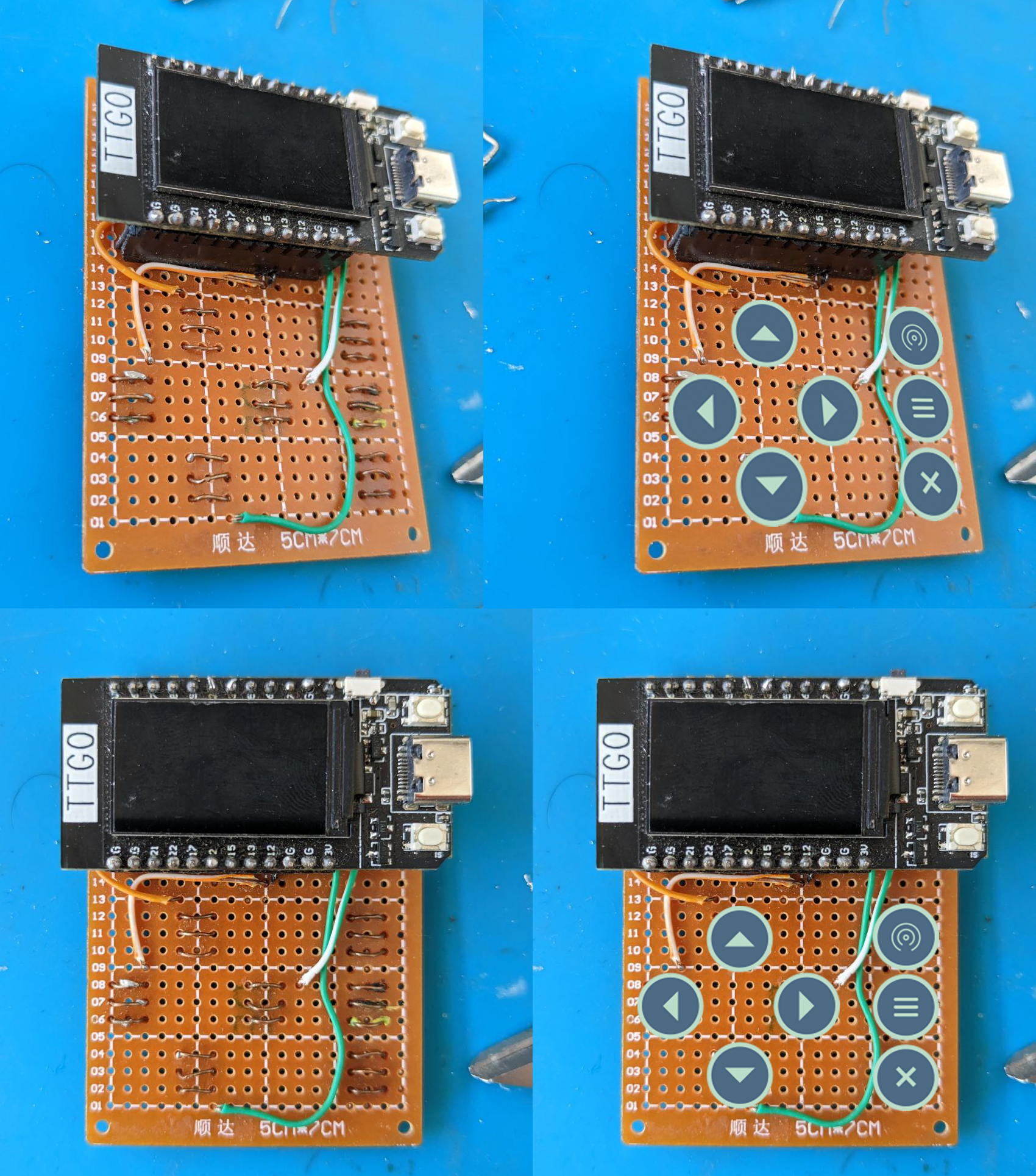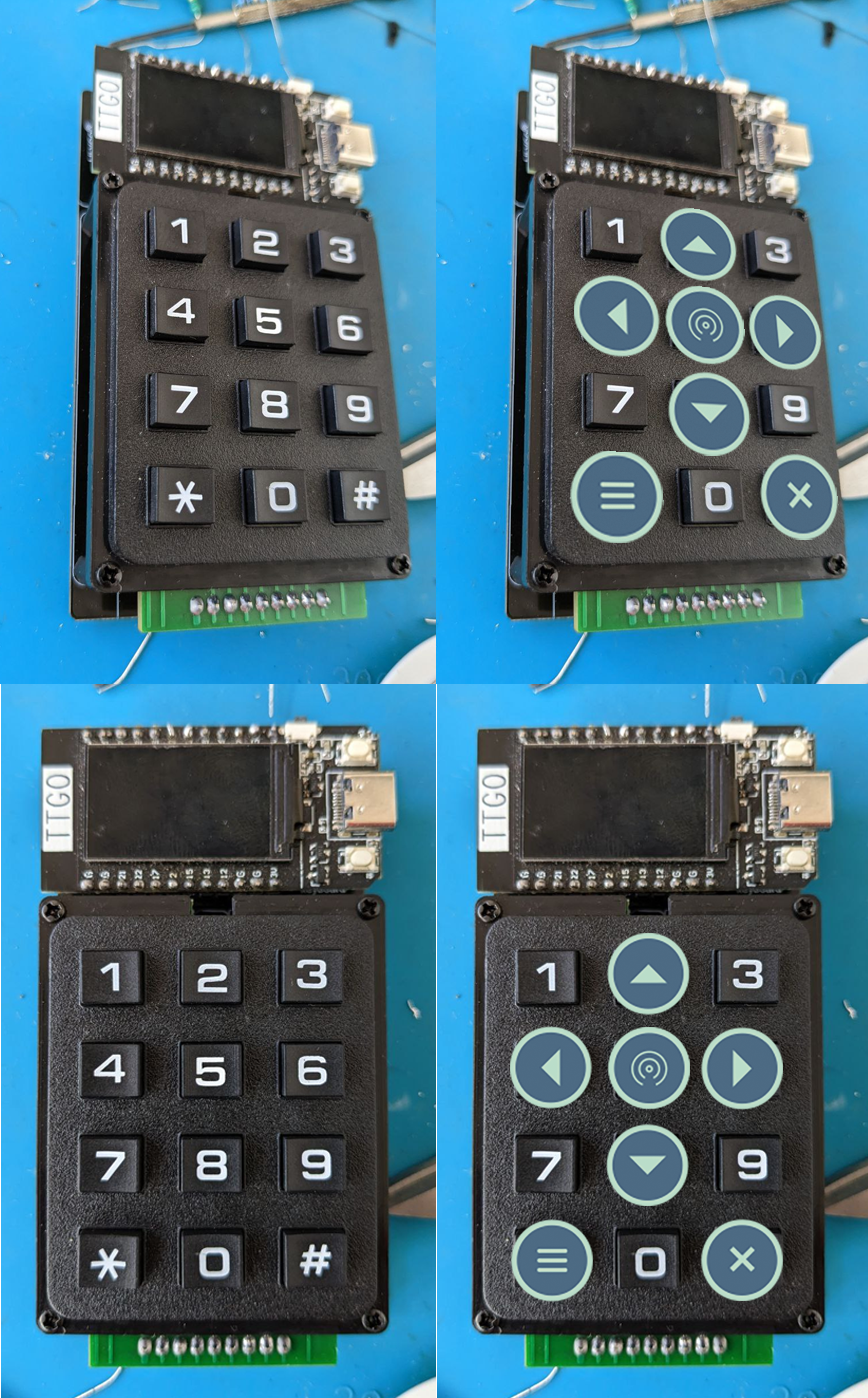As I said in the introduction, I thought that the best way to spread the project is to use opensource and inexpensive boards that everyone can buy from various stores on the web.
In fact, I believe that designing a specific pcb limits the use and development of the project only to those who are familiar with smd soldering and other board manufacturing techniques. In this way, even hobbyists or students will have access to all the features of the project.
For the past few months I have been using the T-Display board because it is inexpensive, already equipped with a display, and already ready to attach a battery.
To quickly test the firmware, I created this board. It is not the most elegant, but it is functional!

Regarding physical buttons I will also use this board. A bit more elegant than the first one....

For future developments I do not exclude testing other opensouce boards like T-Display-S3 (the evolution of the board I am using), T5-2.13inch E-paper (E-paper might be good for battery life) and Seeeduino Seeed Studio XIAO ESP32-C3 (super cheap and suitable for small applications).
The next hardware developments will be the design of 2 pcb:
- a development board that, in addition to giving a more professional development and testing tool, will also be able to be used in some cases, such as in pathologies that allow only one finger movement.
- a pcb that allows the use of both physical and touch buttons, so that device size can be scaled up, giving the possibility of creating much larger devices for pathologies that require it
 dariocose
dariocose
Discussions
Become a Hackaday.io Member
Create an account to leave a comment. Already have an account? Log In.